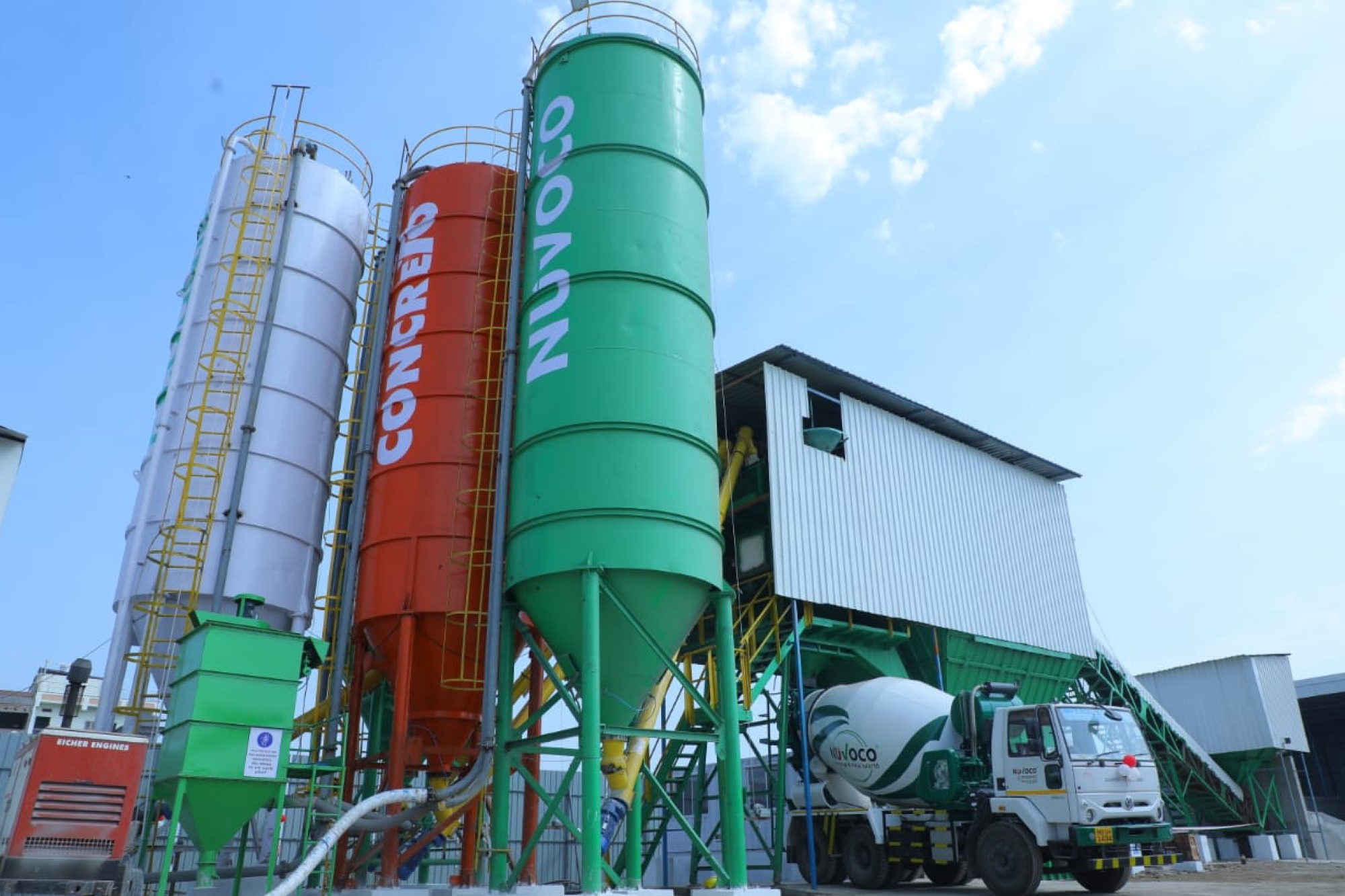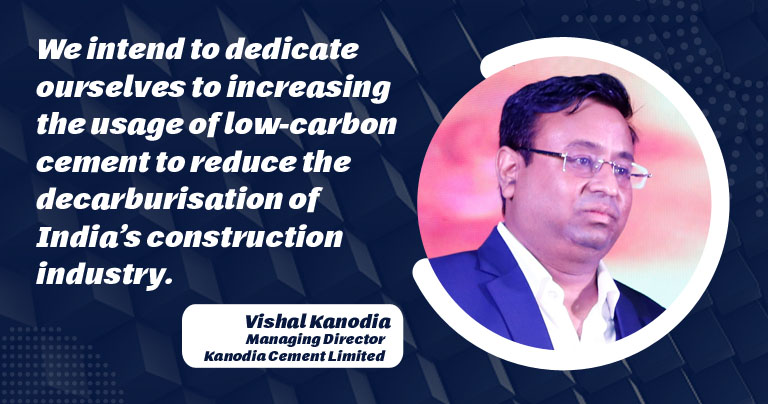Indian cement prices are expected to increase as demand grows
By Edit Team | March 8, 2023 5:49 pm SHARE

Emkay Global Financial Services has predicted that the cost of cement per bag in India will rise by INR10-15 (equivalent to US$0.12-0.18) in December. India is the world’s second-largest cement producer, with a capacity exceeding 7% of the total installed globally. The housing, commercial, and industrial construction sectors are expected to drive cement demand, with consumption projected to reach 419.92 million tonnes by the fiscal year 2027.
Cement industry is evolving with sustainability.
y combining industrial waste with natural materials like fly ash, slag, and limestone, green cement offers a solution to significantly reduce carbon emissions, minimise waste, and conserve natural resources in construction and infrastructure projects. While developed countries have already adopted green cement, India is slowly gaining momentum, with the government focusing on sustainable development. As demand for sustainable solute ons increases, green cement is expected to play a pivotal role in shaping India’s infrastructure and construction industry towards a greener and more sustainable future.
The cement industry is innovating in sustainability to address growing global concerns about climate change. Although the industry has reduced emissions, cement production still generates about 7 percent of the world’s greenhouse gas emissions. Vishal Kanodia, Managing Director of Kanodia Cement Limited, emphasises the need for the industry to accelerate its efforts to achieve carbon-neutral status by 2050. The industry collaborates with policymakers, think tanks, financial institutions, and consultants to achieve this goal.
The demand for eco-friendly building materials has gained market traction in recent years, driven by consumers’ desire to minimise their ecological footprint. According to Venkateshwar Kumar, CEO-Retail of IBO, the Indian government is incentivising green construction through programs such as Integrated Habitat Assessment (GRIHA), leading to sustained growth and reduced environmental degradation and natural resource depletion.
While the construction industry has been criticised for its unsustainable nature, Ashwin Reddy, Managing Director of Aparna Enterprises, notes that innovation and technology adoption allow the industry to reduce its carbon emissions significantly. Customers are also increasingly conscious of the environment, and the industry is taking proactive steps to produce and use environmentally friendly products through sustainable practices.
Global trends impacting raw material prices.
Cement production involves raw materials, including lime, silica, alumina, other minerals, and packaging materials. Kanodia explains that this mixture is ground, mixed, and heated at high temperatures in a rotary kiln to produce clinker, which is then finely ground and mixed with gypsum, fly ash, and slag to create cement. Additionally, the cost of power is a significant input in the final production of cement, with global prices of raw materials and other input costs continuously increasing.
According to Kumar, building and construction materials have become increasingly expensive in recent years, catching builders and contractors off guard. The prices of commodities like cement, steel, and aluminium have steadily risen, disrupting the entire industry. This upward trend in raw material prices not only threatens the ability of the real estate industry to deliver high-quality projects on time but also disrupts the entire value chain of these materials, putting cost pressure on home-building product aggregators like us.
Investments in Solar for power consumption
Some companies are shifting towards solar power to lower costs and reduce their dependence on traditional electricity sources to meet their energy needs. Kanodia notes that power costs are a significant expense in cement production, leading many companies to invest in clean and sustainable energy by setting up solar power plants. While the initial costs of establishing a solar power plant can be high, in the long term, solar power is more cost-effective than traditional electricity sources.
Reducing onsite emission
Kanodia suggests that companies can take several measures to reduce carbon emissions at construction sites, such as using clean energy sources instead of diesel generators, covering the area with a tin shed or cloth, sprinkling water to suppress dust, and planting trees in the vicinity. Building materials like sandstone chips can also be covered and regularly sprinkled with water to prevent air pollution.
While eco-friendly construction materials are energy-efficient and have no negative environmental impact, Kumar notes that few are in high demand due to reliability, cost, and availability concerns. In light of this, he highlights the increasing popularity of green concrete technology at construction sites, which uses recycled and waste materials such as mining, glass, mud, sawdust, and burnt clay. This technology helps reduce emissions, including CO2, and is heat-resistant, fire-resistant, and has a long lifespan.
Sustainability in cement and concrete
In pursuing sustainability, the cement and concrete industry has made considerable progress. Ready-mix concrete (RMC) has become a preferred method due to its uniformity, which reduces the waste of natural resources like water. Reddy from Aparna Enterprises explains that the company has implemented various measures to minimise its carbon footprint, such as using large storage bins to store RMC for a continuous supply and reducing fuel emissions from transportation. The company has also replaced river sand with manufactured sand (M Sand or Crushed Sand) for concrete mix preparation. Additionally, residual materials from external processes, such as Fly Ash and Ground Granulated Blast furnace slag (GGBS), are increasingly being reused to make concrete. The global green cement market is projected to experience significant growth of 8.5 percent by 2025, which presents an opportunity to revolutionise the Indian construction and infrastructure sector. Traditional cement production is a major contributor to greenhouse gas emissions and environmental degradation. In contrast, green cement offers a more sustainable and eco-friendly alternative for residential, commercial, and industrial spaces. As demand for cement in these areas increases, there is a promising market opportunity for green cement and building materials in the coming years.
Vishal Kanodia, Managing Director, Kanodia Cement Limited
Companies can reduce emissions by using clean energy, covering sites, and planting trees.
Venkateshwar Kumar, CEO – Retail, IBO
There is an increased demand for eco-friendly building materials and products.
Ashwin Reddy, Managing Director, Aparna EnterprisesManufactured sand replaces river sand to make a sustainable concrete mix for construction.
Cookie Consent
We use cookies to personalize your experience. By continuing to visit this website you agree to our Terms & Conditions, Privacy Policy and Cookie Policy.


































-20240213125207.png)

























